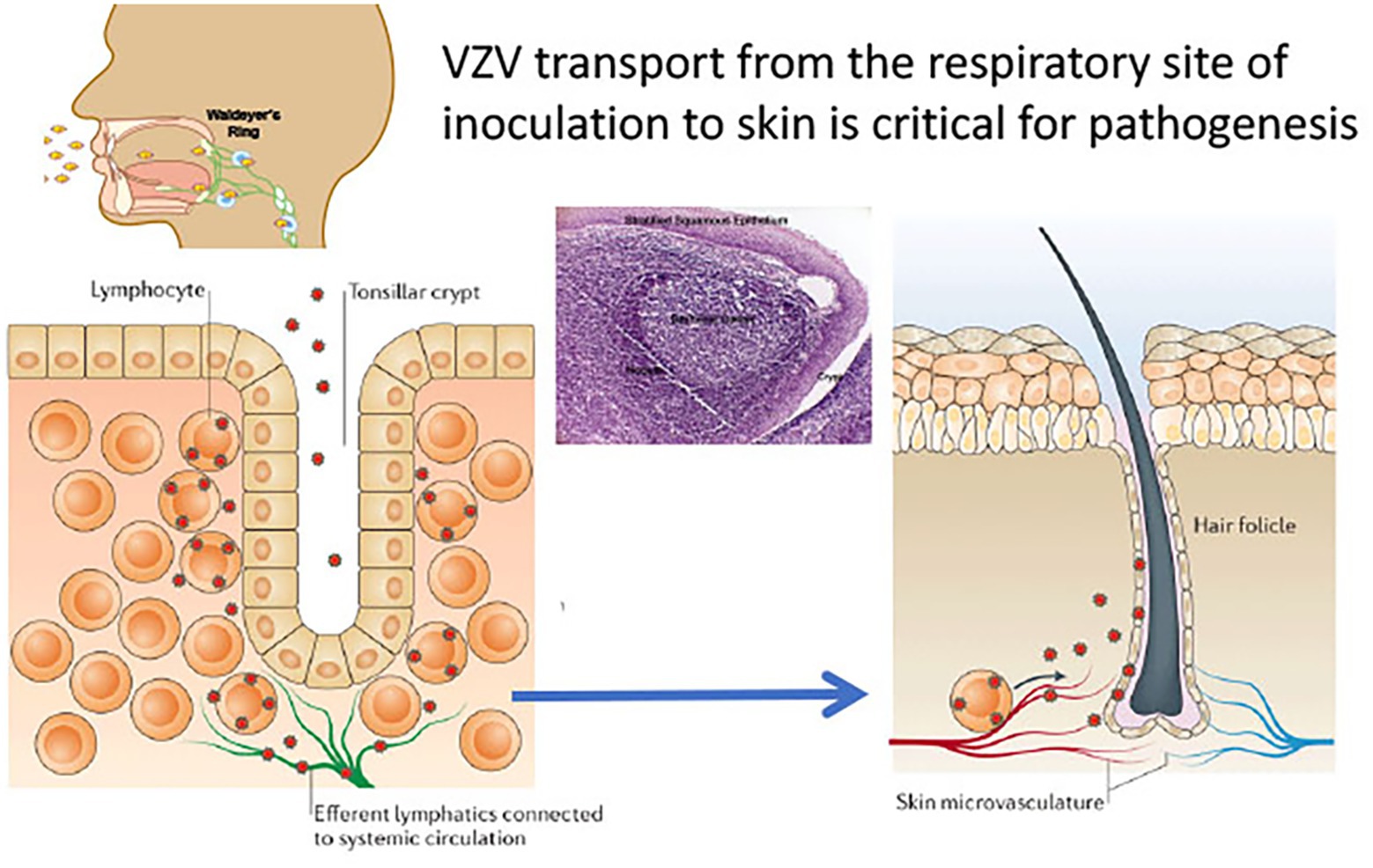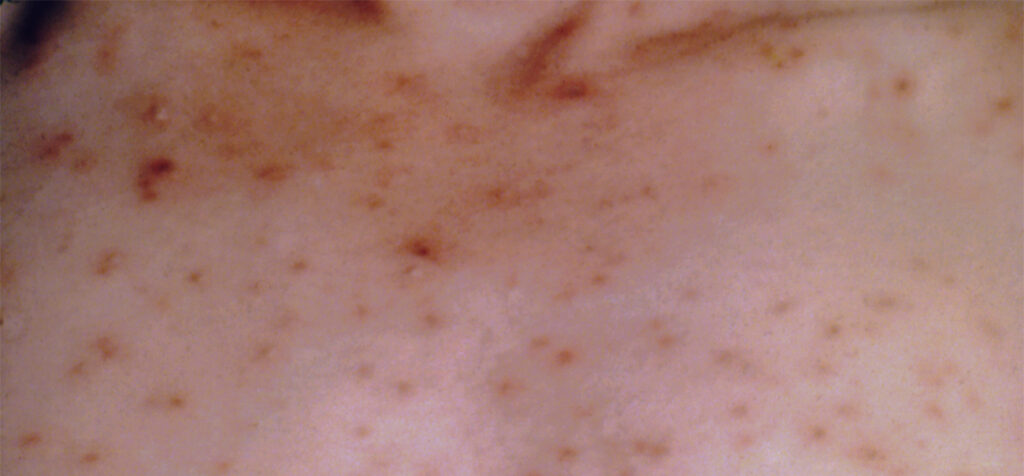Chickenpox, also known as Varicella, is a highly contagious disease that primarily affects children but can occur in adults who have not been previously exposed to the virus. Caused by the varicella-zoster virus, this condition is characterized by an itchy rash, fever, and fatigue. While most cases are mild and resolve on their own, chickenpox can lead to complications, especially in individuals with weakened immune systems. This article explores the causes, symptoms, and treatments of chickenpox to provide a comprehensive understanding of the disease.

What Causes Chickenpox?
Chickenpox is caused by the varicella-zoster virus, which belongs to the herpesvirus family. This virus is highly contagious and spreads easily through direct contact or respiratory droplets. Understanding how the virus spreads and who is at risk can help prevent outbreaks and manage the disease effectively.
How Does the Virus Spread?
- Airborne Transmission: The virus can spread through the air when an infected person coughs or sneezes, releasing respiratory droplets into the environment.
- Direct Contact: Touching the fluid from chickenpox blisters can transmit the virus to others.
- Contaminated Surfaces: The virus can survive on surfaces for a short period, making it possible to contract the disease by touching objects that have been contaminated.
Who Is at Risk?
While chickenpox is most common in children, certain groups are at higher risk of contracting the disease or experiencing severe symptoms:
- Unvaccinated Individuals: People who have not received the chickenpox vaccine are more likely to contract the virus.
- Newborns and Infants: Babies whose mothers have not had chickenpox or the vaccine are vulnerable to infection.
- Pregnant Women: Contracting chickenpox during pregnancy can pose risks to both the mother and the unborn child.
- Individuals with Weakened Immune Systems: Those undergoing chemotherapy, organ transplants, or living with conditions like HIV/AIDS are at greater risk of complications.
Symptoms of Chickenpox
The symptoms of chickenpox typically appear 10 to 21 days after exposure to the virus. They progress in stages, starting with mild flu-like symptoms before the characteristic rash develops. Recognizing these symptoms early can help manage the disease effectively.
Early Symptoms
In the initial stage of chickenpox, individuals may experience the following symptoms:
- Fever
- Headache
- Fatigue
- Loss of appetite
- Mild stomach ache
These early signs often resemble those of the common cold or flu, which can make diagnosis challenging in the early stages.
The Rash
The hallmark symptom of chickenpox is the itchy rash that develops a few days after the onset of early symptoms. The rash progresses through several stages:
- Red Spots: Small red bumps appear on the skin, often starting on the face, chest, and back before spreading to other parts of the body.
- Blisters: The red spots develop into fluid-filled blisters that are highly contagious.
- Crusting: Over time, the blisters break open, ooze fluid, and form crusts or scabs.
The rash can be extremely itchy, leading to discomfort and potential scarring if scratched excessively.
Other Possible Symptoms
In addition to the rash, some individuals may experience:
- Body aches
- Sore throat
- Swollen lymph nodes
While most cases of chickenpox are mild, complications such as pneumonia, encephalitis, or bacterial infections of the skin can occur, particularly in high-risk groups.
Treatment Options for Chickenpox
Although chickenpox usually resolves on its own within one to two weeks, treatment focuses on relieving symptoms and preventing complications. There is no cure for the disease, but various measures can help manage discomfort and speed up recovery.
Home Care and Symptom Management
For most people, chickenpox can be managed at home with simple remedies:
- Rest: Adequate rest is essential for recovery. Staying home and avoiding contact with others helps prevent the spread of the virus.
- Hydration: Drinking plenty of fluids, such as water and clear broths, prevents dehydration caused by fever.
- Cool Baths: Soaking in lukewarm water with added oatmeal or baking soda can soothe itching and reduce irritation.
- Calamine Lotion: Applying calamine lotion to the rash can alleviate itching and promote healing.
- Trimming Nails: Keeping fingernails short reduces the risk of scratching, which can lead to infection or scarring.
Medications
In some cases, medications may be prescribed to manage symptoms or treat complications:
- Antihistamines: These medications can help reduce itching and improve comfort.
- Fever Reducers: Acetaminophen is often recommended to lower fever and relieve pain. Aspirin should be avoided in children due to the risk of Reye’s syndrome.
- Antiviral Drugs: In severe cases or for individuals at high risk of complications, antiviral medications like acyclovir may be prescribed to shorten the duration of the illness.
When to Seek Medical Attention
While chickenpox is generally mild, certain signs warrant immediate medical attention:
- High fever that persists for more than four days
- Difficulty breathing or chest pain
- Severe headache or confusion
- Rash that becomes warm, red, or tender, indicating a possible bacterial infection
- Signs of dehydration, such as dry mouth, dizziness, or reduced urination
Prevention of Chickenpox
Vaccination is the most effective way to prevent chickenpox. The chickenpox vaccine has significantly reduced the incidence of the disease and its associated complications.
The Chickenpox Vaccine
The chickenpox vaccine is typically administered in two doses:
- The first dose is given between 12 and 15 months of age.
- The second dose is administered between 4 and 6 years of age.
Older children and adults who have not been vaccinated or have not had chickenpox can also receive the vaccine. It is safe and effective, providing long-lasting immunity in most cases.
Additional Preventive Measures
In addition to vaccination, practicing good hygiene and taking precautions during outbreaks can help prevent the spread of chickenpox:
- Avoid close contact with individuals who have chickenpox.
- Wash hands frequently with soap and water.
- Disinfect surfaces and objects that may have come into contact with the virus.
- Stay home if you suspect you have chickenpox to avoid spreading it to others.
Complications of Chickenpox
While most cases of chickenpox are mild, complications can arise, especially in high-risk populations. Understanding these potential complications underscores the importance of prevention and prompt treatment.
Common Complications
- Bacterial Skin Infections: Scratching the rash can introduce bacteria, leading to infections that may require antibiotics.
- Pneumonia: This lung infection is more common in adults and individuals with weakened immune systems.
- Encephalitis: Inflammation of the brain is a rare but serious complication that requires immediate medical attention.
Complications During Pregnancy
Contracting chickenpox during pregnancy can pose risks to both the mother and the baby:
- Congenital Varicella Syndrome: If a woman contracts chickenpox during the first or second trimester, the virus can affect fetal development, leading to birth defects.
- Neonatal Varicella: Babies born to mothers who contract chickenpox shortly before delivery are at risk of developing severe neonatal varicella.
Living with Chickenpox: Tips for Recovery
Recovering from chickenpox requires patience and care. Here are some tips to ensure a smooth recovery:
- Follow your healthcare provider’s advice regarding medications and treatments.
- Avoid scratching the rash to prevent scarring and infections.
- Wear loose, comfortable clothing to minimize irritation.
- Use over-the-counter remedies as directed to manage symptoms.
- Monitor for signs of complications and seek medical help if needed.





